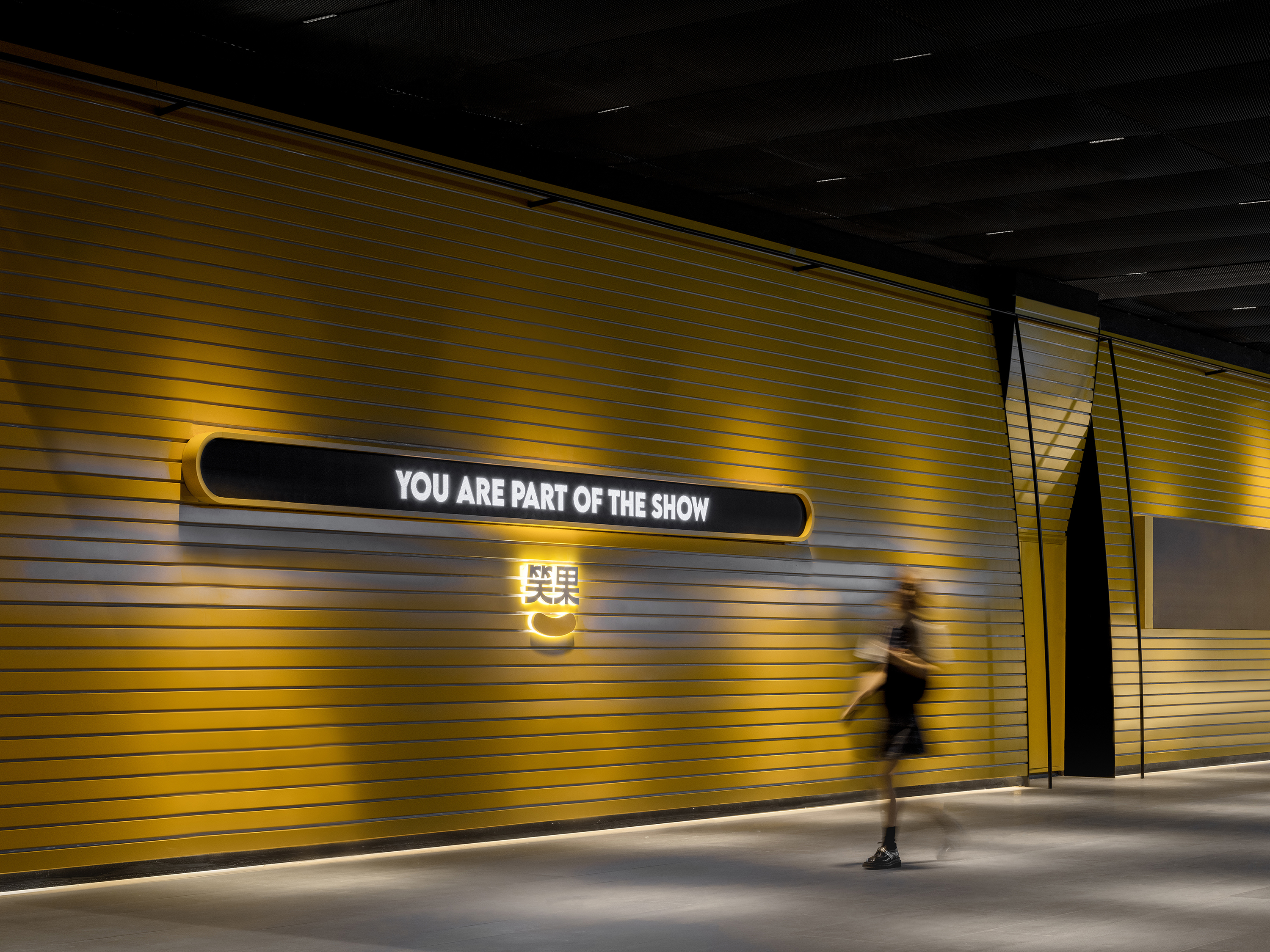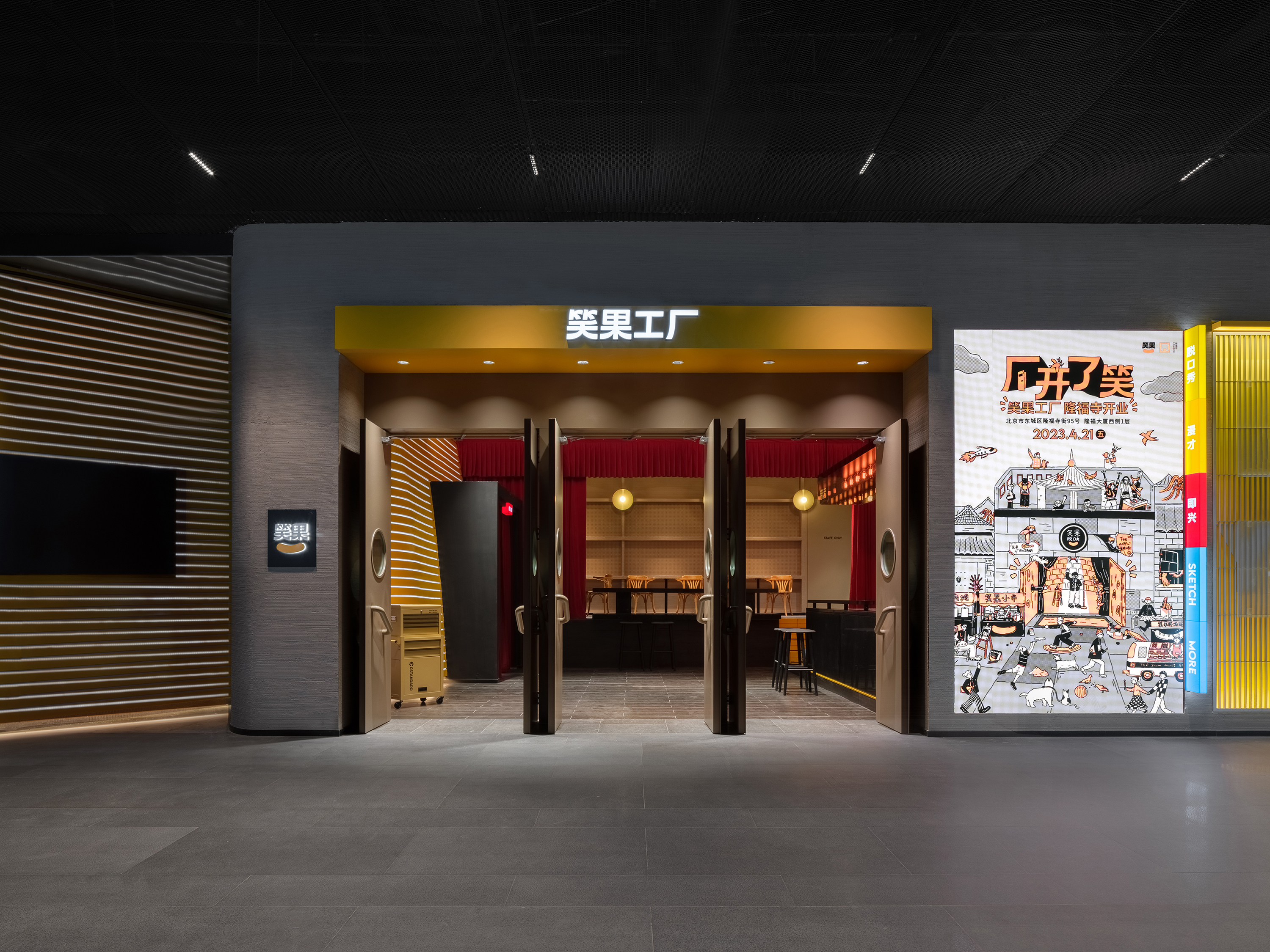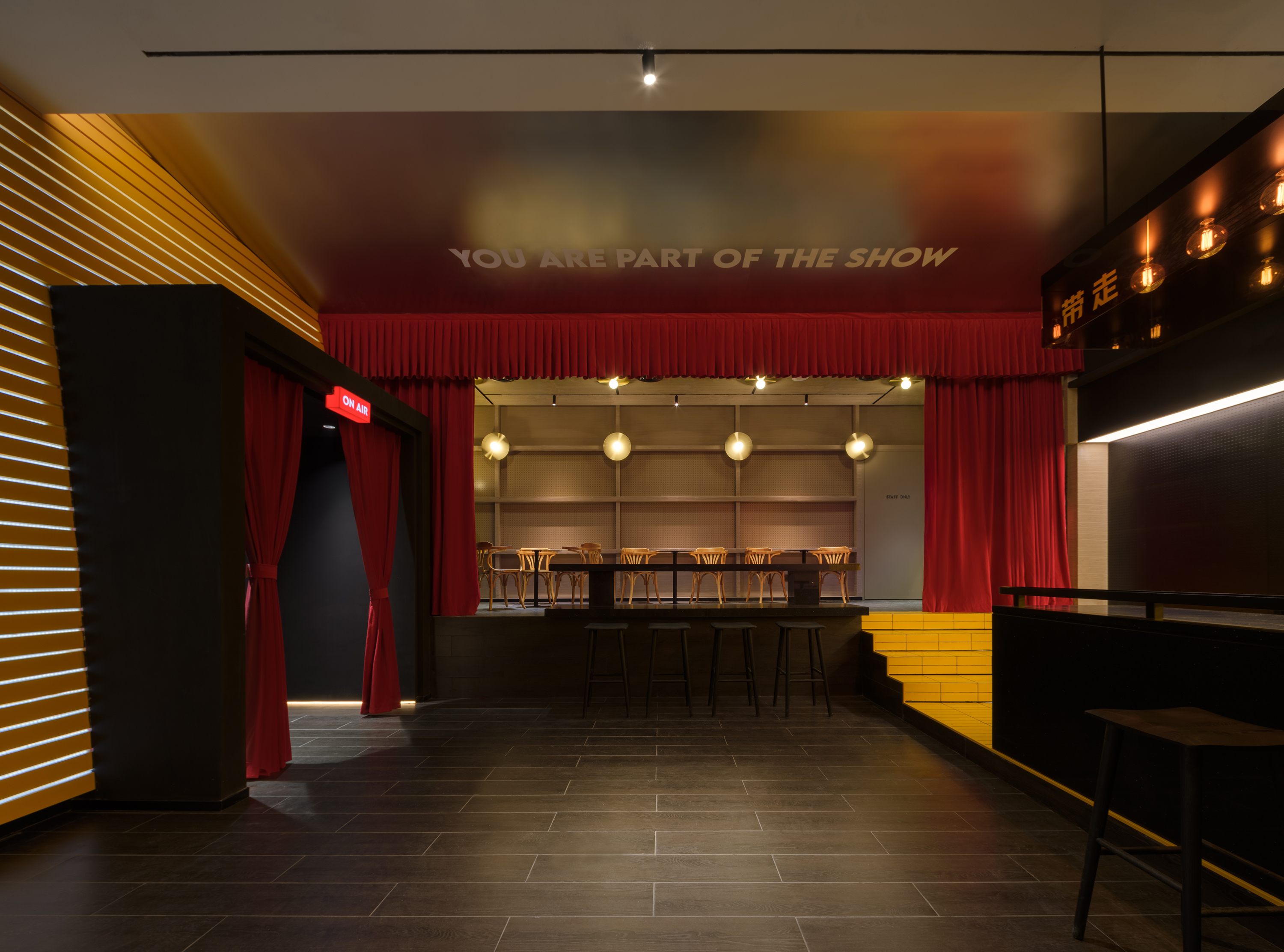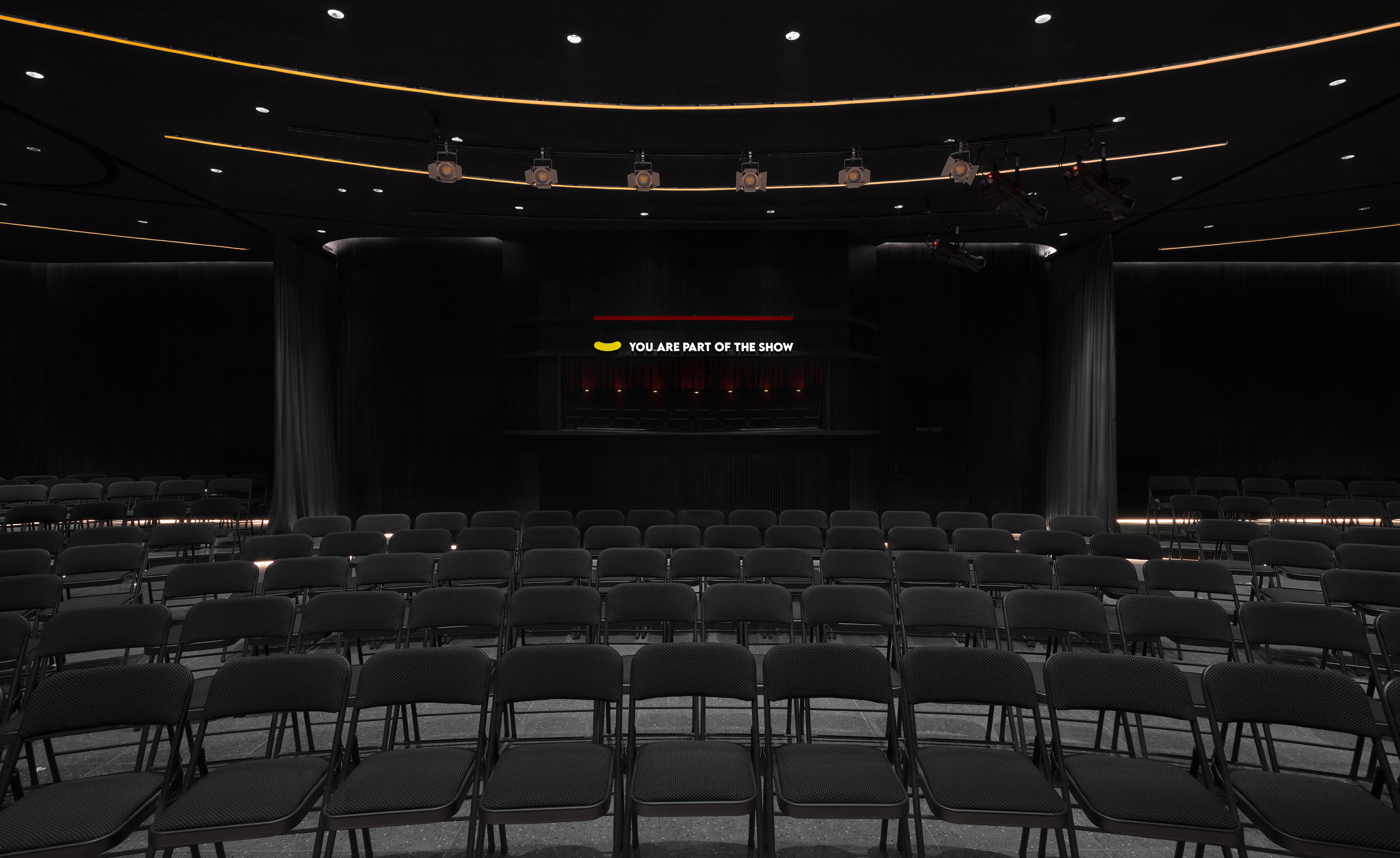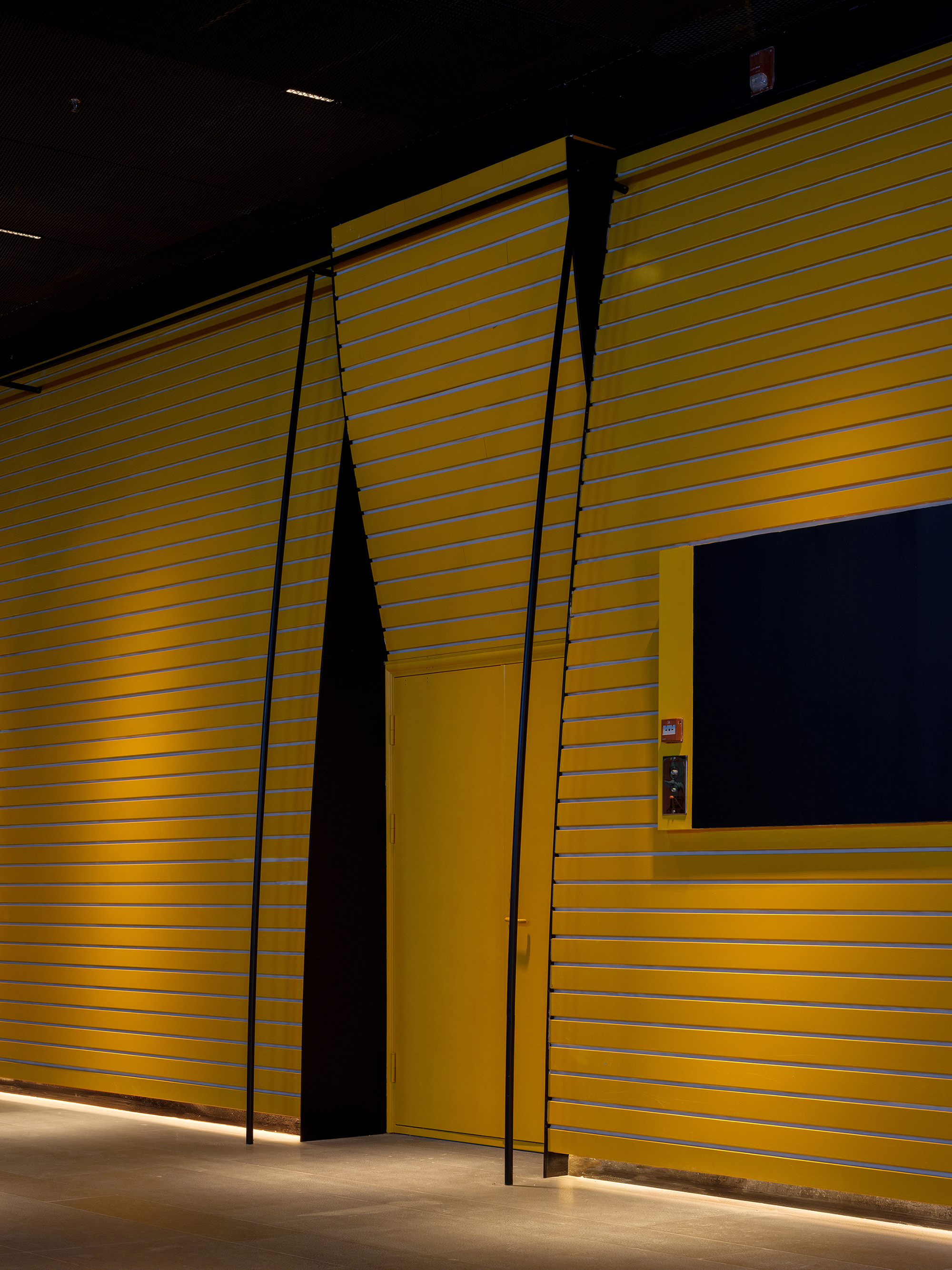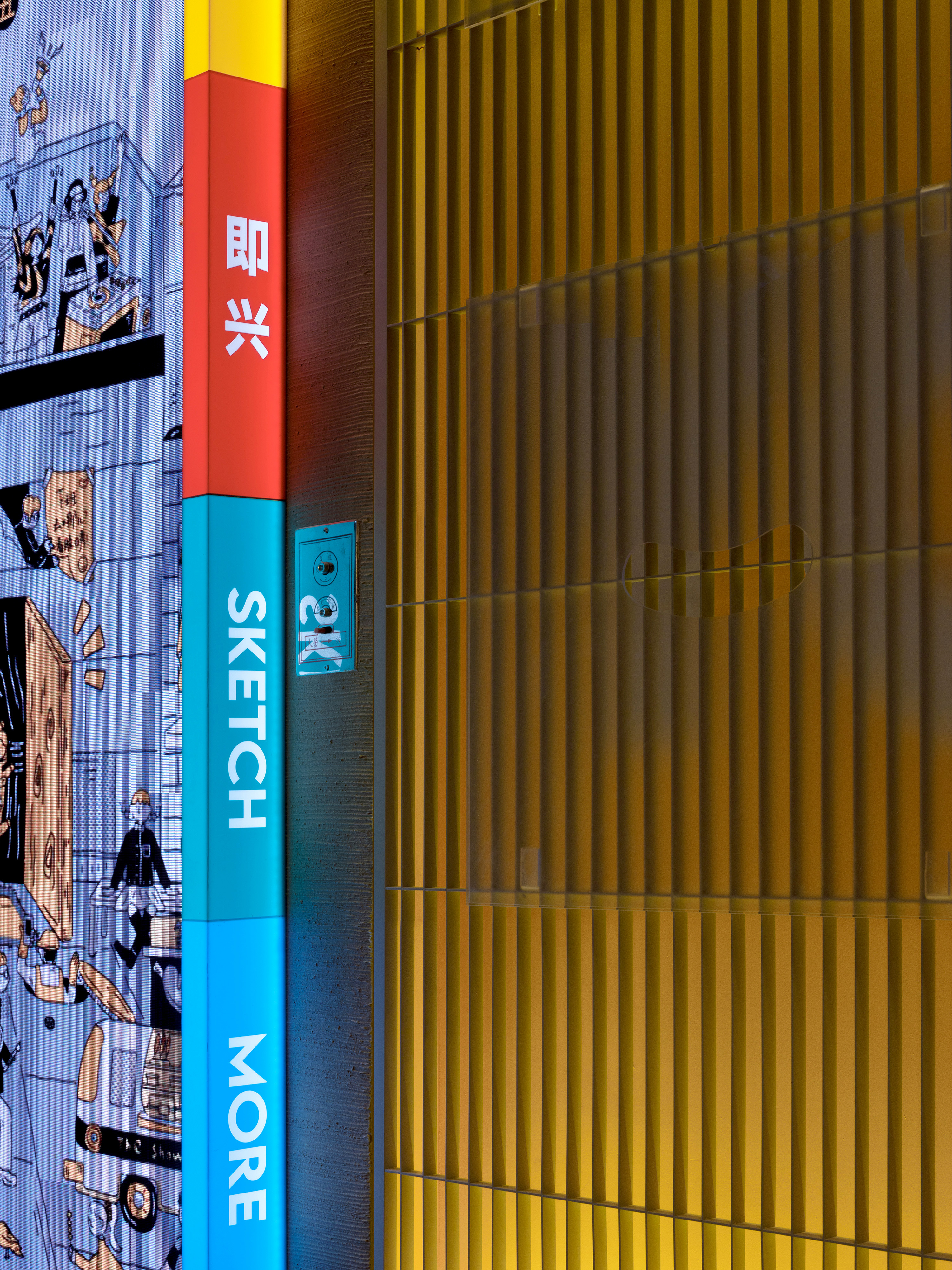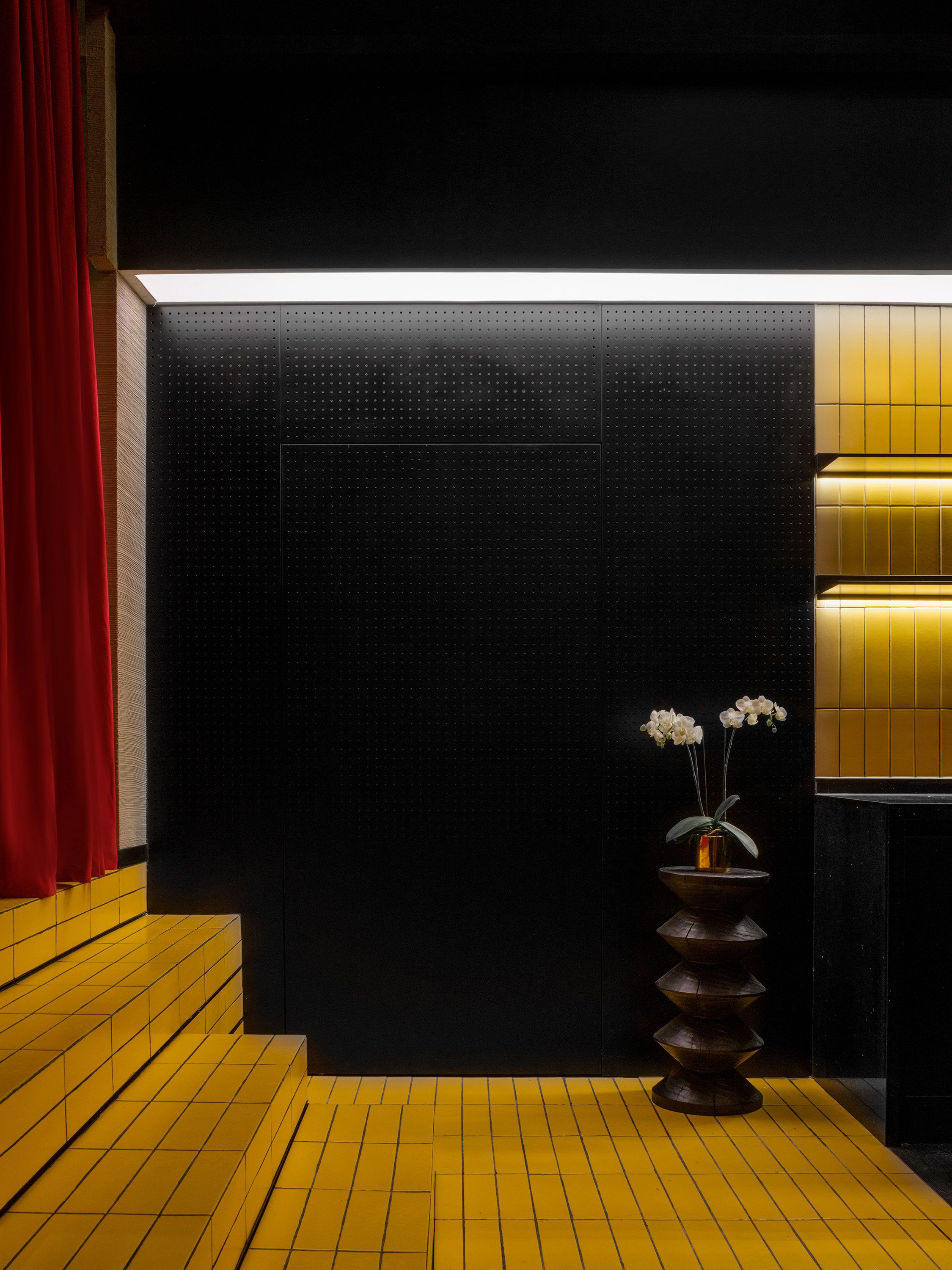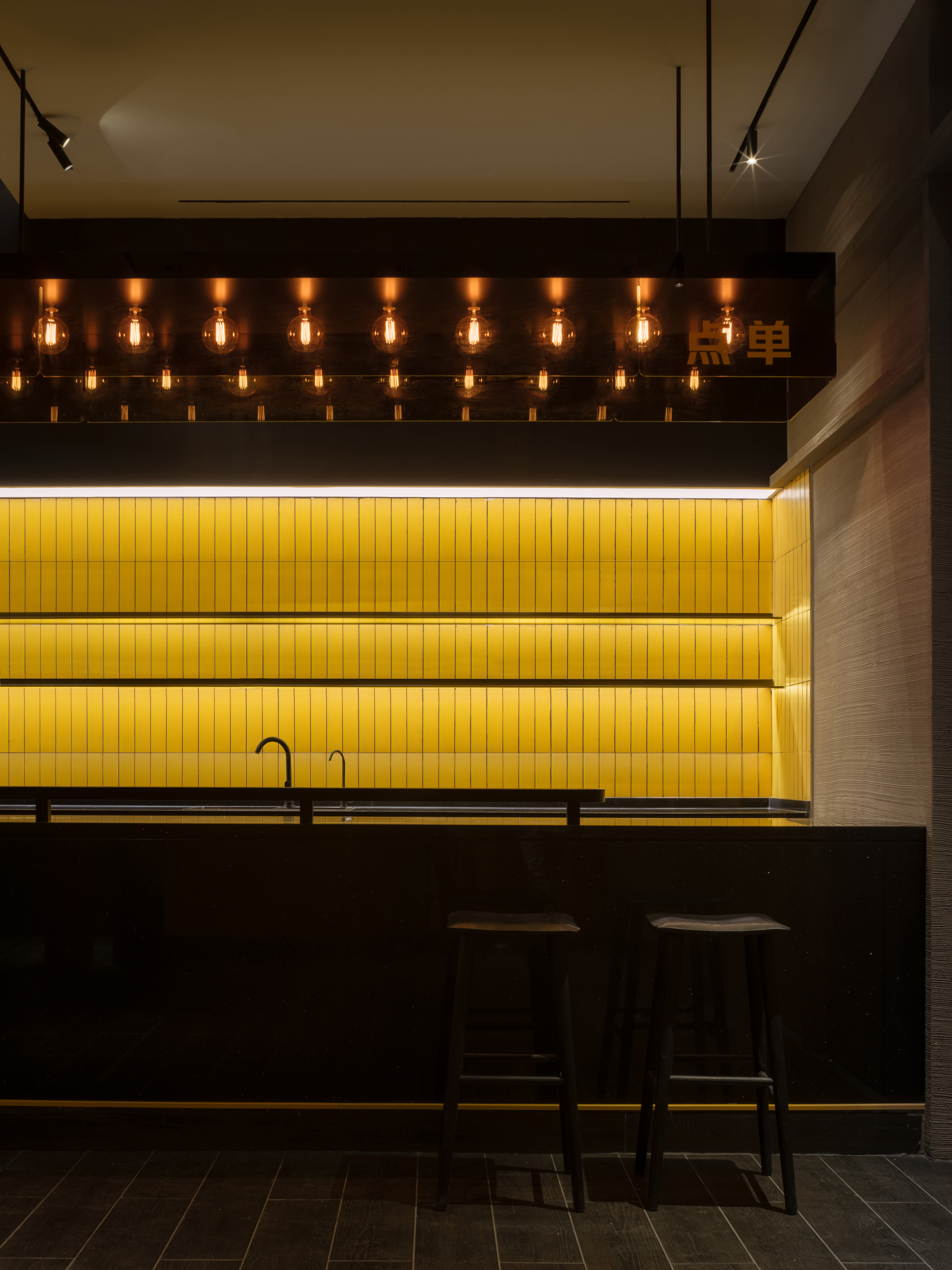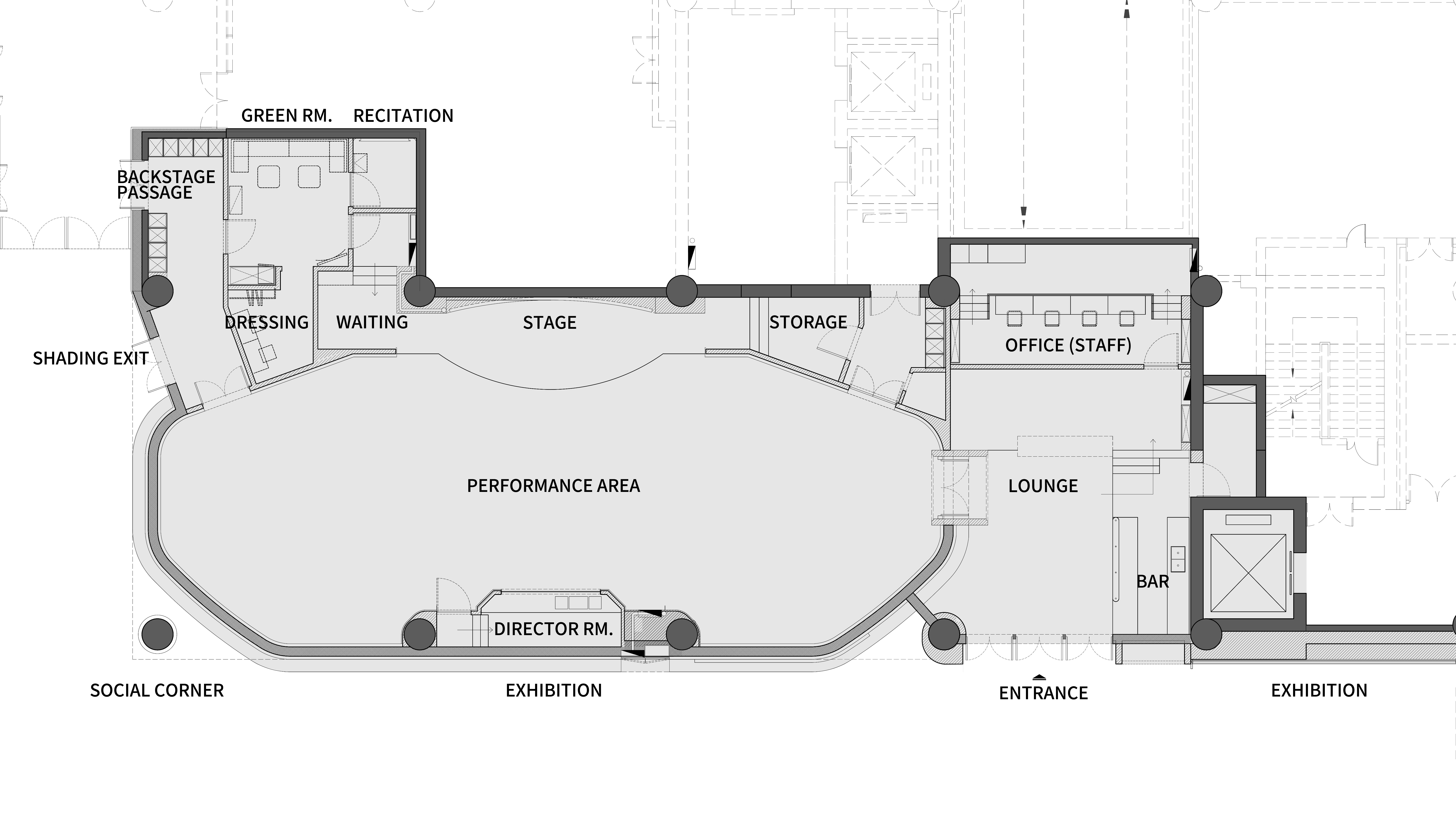Fun Factory 笑果工厂
(一) 坐标
委托方是中国知名的年轻态喜剧文化制作公司,制作了多档家喻户晓的热门综艺节目,本项目是旗下全新的线下综合演艺空间空间,项目建立在北京的古隆福寺的旧址上。
在传统的东方文化里,人们在情感表达上总是相对内敛,而单口喜剧的兴起,似乎为人们的情感释放打开了一扇大门。作为舶来品,新喜剧在中国尚有一种全新的能量。作为东西方文化相望的窗口,项目位于北京隆福寺的场所带有一种特殊的人文特征和叙事性。也因此,设计师希望把这里称之为「笑」的能量场,它是一个新的喜剧地标。
(二) 胡同、老北京、喜剧
在老北京城的印象里,不仅有遍布胡同的青砖绿瓦,也有京城的琉璃黄与朱砂红。从色彩规律上,人们更趋向于被明亮、鲜艳的事物吸引,因此设计师在对建筑空间的色彩构成中有意且巧妙的强化了该特征。这也再次解释了该项目所定义的地标属性,「市集与看客」「红黄与青绿」。
(三)有关「纯粹」与「融合」的命题
相对于其他戏剧类型的叙事方式,单口喜剧演出更注重和观众之间的平级互动体验——物理上近距离的对话体验,以及心理上的零距离共情,因此设计这类空间最需要关注的是演员与观众的距离感。而这种距离感体现在物理空间、光影空间和声学空间,令观众能感受与演员和舞台间的亲密感,降低演员对空间和观众的陌生感。
Chapter 1: From the architect's perspective:
The client is a well-known young Chinese comedy and cultural production company that has produced many popular variety shows. This project is their brand-new offline comprehensive performing arts space. The project is located on the site of the former Longfu Temple in Beijing.
In traditional Eastern culture, people tend to be more reserved in expressing their emotions, but the rise of stand-up comedy seems to have opened a door for the release of people's feelings. As an imported form, the new comedy has a fresh energy in China. As a window between Eastern and Western cultures, the site at the Longfu Temple in Beijing has a unique humanistic character and narrative. Therefore, the designers hope to designate this place as the "laughter" energy field, a new comedy landmark.
Chapter 2: Hutong, old Beijing city and comedy
In the impression of old Beijing city, there are not only the blue-brick lanes and green-tiled roofs but also the vibrant colors of glazed yellow and vermilion red. Based on the color principles, people are naturally drawn to bright and vivid elements. Therefore, the designers intentionally and skillfully enhanced this feature in the color composition of the architectural space. This further emphasizes the landmark attributes defined by the project, combining the bustling marketplace and spectators with the colors of red, yellow, green, and blue.
Chapter 3: "About Pure & Fusion”
Compared to other theatrical forms of storytelling, stand-up comedy shows emphasize interactive experiences on an equal level with the audience: physical closeness in conversation and psychological empathy at zero distance. Therefore, when designing such spaces, the crucial factor to consider is the sense of distance between performers and the audience, which manifests in physical space, lighting, and acoustics. It allows the audience to feel an intimate connection with the performers and the stage, reducing the sense of unfamiliarity between the performers, space, and the audience.

